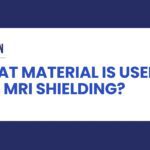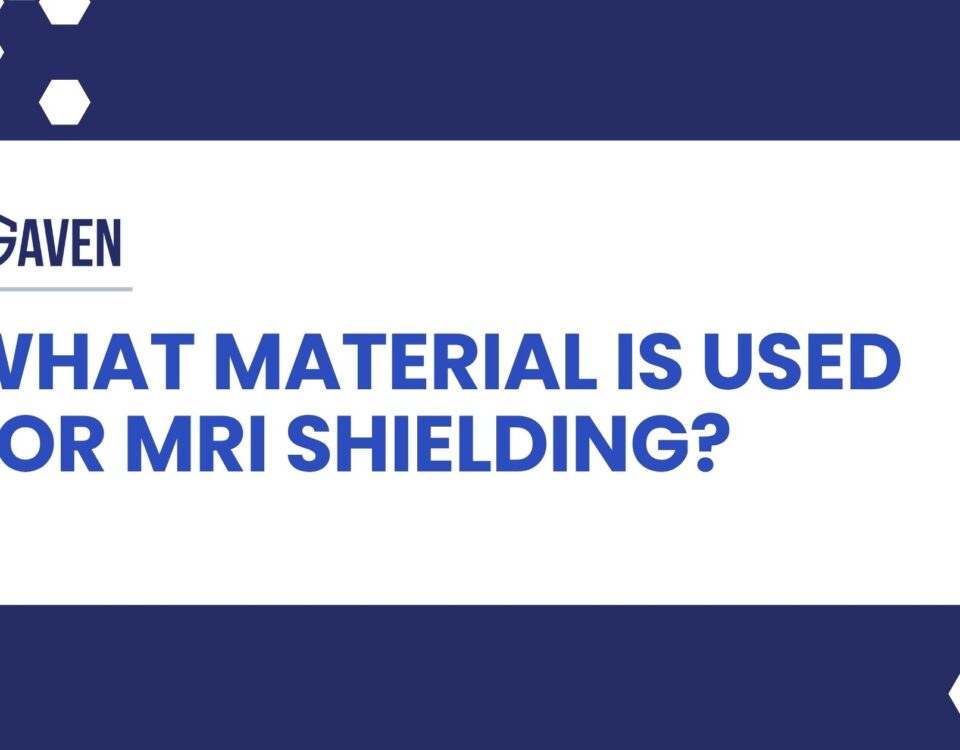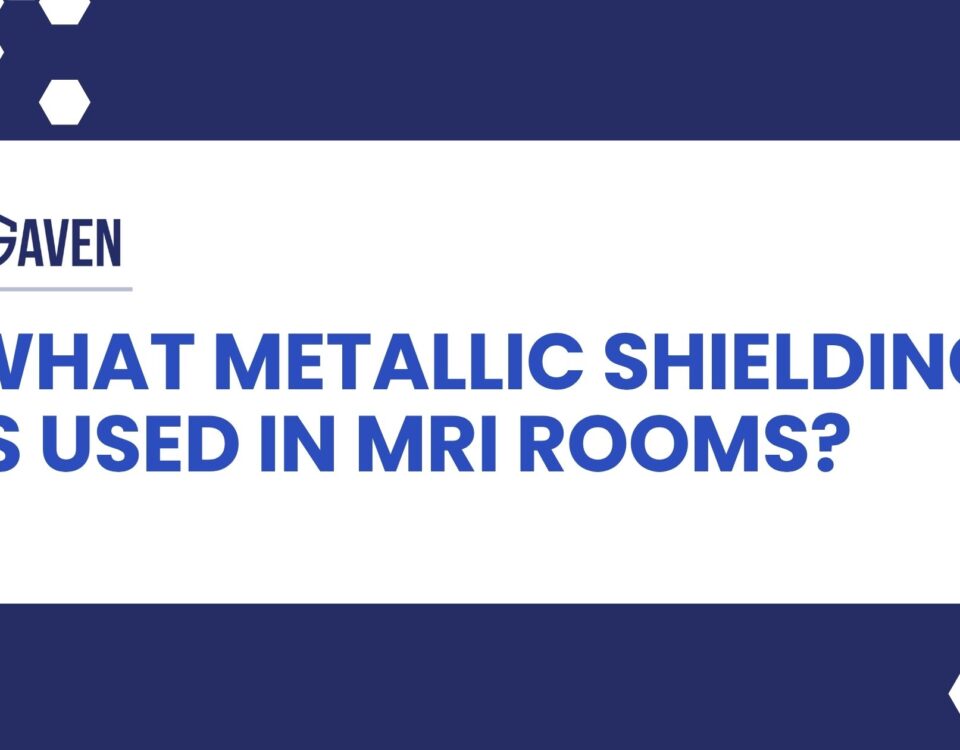


What Material Is Used for MRI Shielding?
July 8, 2025


Why Are MRI Rooms Shielded?
July 8, 2025MRI systems are incredibly sensitive to radiofrequency (RF) noise. Without proper shielding, these signals—from cell towers, elevators, or even nearby electronics—can distort scan data or disrupt equipment function. That’s why MRI shielding isn’t just a technical detail—it’s a clinical requirement.
But what materials actually go into shielding an MRI room? And how do they block this interference?
In this article, we explain how RF shielding in MRI rooms works, what materials are used to line them, and why only highly specialized MRI shielding companies—like Gaven Industries—have the expertise to install them correctly.
For a broader overview of room design and field containment, explore our MRI Shielding page.
What is the difference between EMI shielding and RF shielding?
Electromagnetic interference (EMI) shielding is an umbrella term that covers any system designed to block electromagnetic energy. It includes:
- Electric field shielding
- Magnetic field containment
- Radiofrequency (RF) shielding
RF shielding in MRI rooms is focused specifically on high-frequency electromagnetic waves—typically in 100 MHz range. These frequencies are used in MRI pulse sequences and are highly vulnerable to interference from wireless signals, power lines, or mechanical systems.
“Even minor RF noise can render a scan unreadable,” says John J. Gaviglia, Founder of Gaven Industries. “Shielding isn’t just about passing inspection—it’s about protecting diagnostic clarity.”
Gaven’s RF shielding designs are tested to MIL-STD-285 and IEEE-299 standards and calibrated to each scanner’s operational frequency. The result: zero-compromise performance, from first scan to final read.
What is the best material for RF shielding?
Copper remains the gold standard for clinical RF shielding systems. Its high conductivity, natural corrosion resistance, and durability make it ideal for building Faraday cages that fully enclose an MRI room.
Additional options include:
- Galvanized steel – Used in hybrid installations where structural reinforcement and RF shielding are needed in tandem
- Aluminum – Lightweight and cost-efficient but typically reserved for non-clinical or low-interference environments
Key considerations in RF shielding performance include:
- Electrical continuity – All shield panels must be bonded into a seamless enclosure
- Penetration control – HVAC, electrical, and gas lines must be passed through RF filters or waveguides
- Door systems – Shielded MRI doors must use RF gaskets or copper fingers to maintain enclosure integrity
Gaven uses proprietary prefabricated copper panels to reduce on-site error and installation time. These panels are modular, soldered, and lab-tested—then re-validated after install with full attenuation measurements.

What metallic shielding is used in MRI rooms?
MRI rooms are typically lined with metallic shielding to prevent RF signals from entering or escaping. This includes:
- Copper sheeting – Either solid or mesh, applied to walls, ceilings, and floors
- Galvanized steel – Provides both structural and shielding function when used in enclosure walls
- Aluminum – Used in select instances but often avoided due to oxidation risk and lower shielding effectiveness
Installations may be completely hidden behind architectural finishes, but behind the walls, the shield must be:
- Electrically continuous – No breaks or weak points
- Grounded at a single point – To prevent voltage loops or leakage
- Tested post-installation – To validate that the shielding meets clinical and regulatory performance levels
“When we say the room is shielded,” Gaviglia adds, “we mean it’s sealed, tested, and certified to block interference that could cost lives if left unchecked.”
Because RF shielding prevents radio signals from interfering with the scan, it must be treated with the same seriousness as any other life-safety system in the hospital.
What is the MRI room’s RF cage constructed with?
The “RF cage” is a full-room Faraday enclosure that ensures electromagnetic isolation. It is constructed from:
- Prefabricated copper panels, soldered together and bonded to form a continuous envelope
- Galvanized steel panels, used where dual-purpose structural and RF function is needed
- Aluminum enclosures, rarely used due to corrosion and performance limitations
Every opening in the cage must be controlled. Gaven installs:
- Waveguide air vents for HVAC systems
- RF filters for power, data, and oxygen lines
- Shielded passthroughs for device connections and grounded access
These components are field-tested to the same standards as the panels themselves, ensuring that the MRI room remains fully compliant with ACR and OEM guidelines.
Unlike off-the-shelf systems, Gaven’s enclosures are:
- Designed for the specific MRI model and field strength
- Fabricated in-house for quality control
- Installed by trained technicians and certified post-install
Shielding done right starts with Gaven
RF shielding isn’t just about the metal in the walls. It’s about the design, the materials, the grounding strategy, and the clinical integrity of the whole suite. Gaven Industries treats MRI shielding as a safety system—not a commodity.
“Some vendors just install panels,” says Gaviglia. “We engineer clinical performance. That’s the difference.”Need expert support selecting the right RF shielding materials for your MRI suite? Contact Gaven Industries, one of the leading MRI shielding companies, for custom-engineered RF enclosures that keep scans accurate and facilities compliant. Explore our full range of MRI Shielding solutions today.




